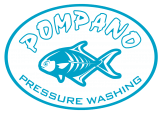How Do Pressure Washers Work?
Grime is made to accumulate on decks, siding, driveways, and even cars by wind, rain, and snow. Pressure washing is easy, secure, and enjoyable to use. It is a strong cleaning technique that effectively removes moss, mold, algae, and grime. However, if the machine is handled or used improperly, it could cause significant property damage. Before attempting to utilize a pressure washer, it’s vital to understand a few key points or, alternatively, contact a professional for help.
Selecting the Best Model
When selecting the power washer type, consider the magnitude of the work you want to complete as well as the strength and durability of the washer you plan to utilize. You can choose between a gas-powered washer, which is more robust, and an electric power washer, which is smaller and quieter. Additionally, a horizontal shaft with a 400-hour life expectancy or a vertical shaft with a 100-hour life expectancy is both options for gas pressure washers.
How do GPM and PSI work?
Gallons per minute, or GPM, is what determines the machine’s water flow and rinsing power. This calculates the surface area as well. The amount of pressure required to clean a surface is measured in PSI, or pounds per square inch. The cleaning units, or CU, of the machine, are calculated by multiplying the GPM by the PSI. This shows how fast the pressure washer will finish the job.
Should the wheels be pneumatic or flat-free?
Select flat-free wheels to save yourself the hassle of tire upkeep. While pneumatic wheels offer a smoother ride, they are susceptible to punctures.
Before attempting to use a power washer on your own, it is important to understand the fundamentals of how they work. However, you may avoid the headache by contacting a reputable pressure washing service. For professional assistance, contact Pompano Pressure Washing in Santa Rosa Beach, FL at (850) 849-4499.
